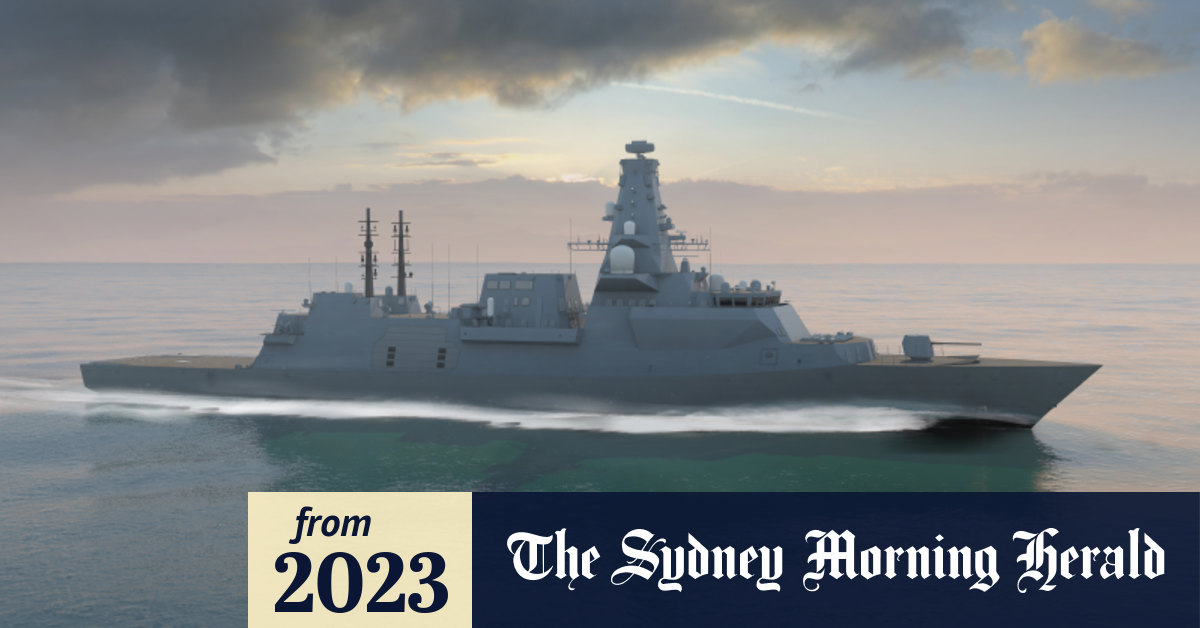So you’re suggesting an Arafura couldn’t use a system that has been purposefully designed to be used in that exact way? Why?
Do you think that is an elegant well thought out implementation? Which other navy currently deploys the system like that. What it is equivalent to RBS70 operating off Australian ships in the past.
I do not think such a system will deter major Chinese fleet unit and naval bombers. Nor will they be able to protect the ships from that kind of firepower. We are talking about a country that has the firepower to lay waste to entire US carrier battle groups, possibly entire fleets. As far as deterrents go, I don't think it changes the status quo at all. Yes it is a possible up gunning, but with heavy compromises and very limited capability.
If adding C-Dome defies physics, then someone should probably let Rafael know, because they seem to think it doesn’t…
Its a CGI render. Not a FOC system in service. But sure, we could spend time, money and effort developing it. Rafael would indeed think that is awesome.
Yes, Australia's SLOC can indeed be blocked. Not sure what the source of the map is, but it is an incomplete or inaccurate map. Given what is missing, namely the SLOC between Australia and most of Asia and the reality that about half of Australia's top ten international trading partners are in those parts of Asia...
China can certainly stop trade to China.
China can probably stop trade/SLOC to Taiwan, Korea and Japan. I'm not sure even the US can stop that.
However, Australia exports commodities. Mineral ores, grains etc. China's Australia bans have proved very ineffective, because these can easily be re-routed to other markets. In terms of blocking oil, well our strategic reserves are in the US, we have plenty of coal and gas locally, every day the sun shines in Australia. Australia isn't like normal mid power countries. Its going to be very hard to apply pressure to it. Australia's export industry employ tiny numbers. Mining is mostly automated. If there is a 6-12 month blockage, while annoying, it won't be the end of Australia.
China is not going to engage a 1 on 1 battle with Australia and blockade a continent. It can't. It can't close the Pacific and Indian oceans. Unlike Europe, Australia isn't reliant on Suez, or Malacca, or Panama. Its not Australia worried about cutting of SLOC, its China.
Obvious targets for Australian exports if China/Korea/Japan are out of the picture, would be the US, Indonesia and India and maybe Europe. If China wants to launch attacks on the US, Indonesia and India they are welcomed to try. Personally I think we could probably continue exporting to Japan, as most of our exports come from the East coast, go out further than Guam and could easily be moved a thousand kilometers further across the pacific.
Which is why a Free Trade Agreement with EU is ultra important. As important as destroyers, and submarines.
What Australia could do (with help) is block all trade through Malacca, and reroute it to go around Australia. it could also stop exporting Australian exports to China. The diplomatic equivalent of sticking your thumb up a dragons arse, as China really, really needs those or its people starve, its cities turn dark and cold and industry shuts down.
Back in 2016, it was estimated that two-thirds of Australian exports passed through the SCS, albeit much of that was to China. Per the value numbers from 2022 and excluding trade with mainland China and Hong Kong, over 27% of Australian exports transited through the SCS or adjacent SLOC. This figure covers exports to Japan, S. Korea, Taiwan, Vietnam, Malaysia, Singapore and Thailand. If one were to include exports to mainland China and Hong Kong, then the figure jumps up to nearly 55% of Australian exports. Data for 2022 can be found
here.
Not all of Australia's trade is in or goes through the SCS but a major portion of it certainly does and therefore events and activities which impact those SLOC will impact Australia.
Again, we aren't taking on China buy ourselves, escorting bulk ore carriers, flagged in Panama, Chinese ships, owned by Chinese companies, operated by Philippine, Indian and Chinese crews, to South Korea and Japan. That isn't what is happening. It is up to Korea and Japan to secure their waters and the oceans between. Australia has basically no merchant marine, certainly that isn't how our trade is conducted.
When China banned Australian coal, it wasn't Australian's stuck on ships, it wasn't Australian shipping companies that owned those ships, it wasn't Australian industry damaged by having no coal.
If they can't, India is building coal power stations and smelters, and can escort shipping, we will sell to them. Or the US. Or to the middle east. Or Pakistan. Or Europe. Or Iran.
If the US starts carpet bombing Chinese cities, or the Chinese start sinking US carrier groups, I presume Australia won't be exporting much to China in either situation.
Again I think people are missing the strategic situation. Its not that the Chinese military has Australia over a barrel and is going to wipe the continent clean of life. But they can certainly annoy Australia, make the region unstable, and they could muscle on our pacific backyard and SEA.
But that isn't the big thing. Its that there is strategic competition between China and the US, and if that turns hot. A change as big as WW2.
The DSR is moving from 2027 time frame to the 2035 timeframe. The US helps those who help themselves. If Europe, South Korea, Japan or Taiwan expects the US to sweep in and save them while they fain inability, they misunderstand the relationship.
Look at the Nuclear submarines. They already exist, but we aren't getting them until early 2030's.

